WOW
SLOW TRAVEL
52 CITIES
1 WEEK
EACH CITY
52 WEEKS
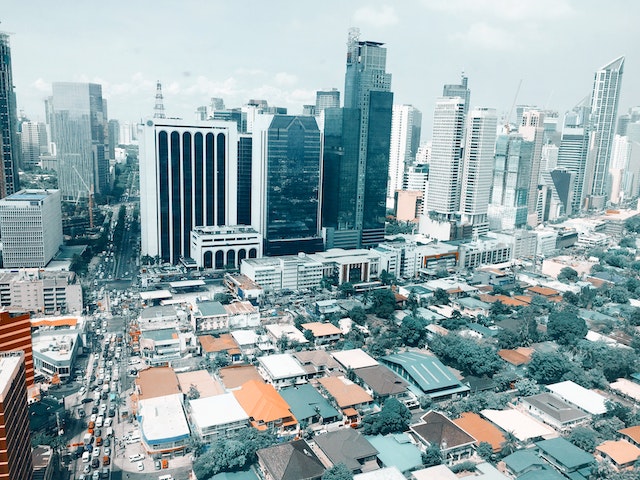
Philippines
The Philippines is an archipelago in Southeast Asia consisting of over 7,000 islands. It is known for its stunning natural beauty, diverse culture, and friendly people. Here’s an overview of the Philippines:
Geography: The Philippines is located in Southeast Asia and is divided into three main geographical regions: Luzon (the largest island and home to the capital, Manila), Visayas (a group of central islands), and Mindanao (the southernmost island).
Natural Beauty: The Philippines is famous for its beautiful landscapes, including pristine beaches, crystal-clear waters, lush tropical forests, and active volcanoes. Popular destinations include Boracay, Palawan, Cebu, and Davao.
Culture and History: The Philippines has a rich cultural heritage influenced by indigenous traditions, Spanish colonization, and American influence. It is known for its festivals, traditional music and dance, and historic sites like Intramuros in Manila.
Language: Filipino (based on Tagalog) and English are the official languages. English is widely spoken and understood, making it easy for English-speaking travelers and expatriates to communicate.
Food: Filipino cuisine is a fusion of flavors from various cultures, with a focus on rice, seafood, pork, and tropical fruits. Popular dishes include adobo, sinigang, and lechon.
People and Hospitality: Filipinos are known for their warmth and hospitality. It’s common to be greeted with a smile and a friendly “Mabuhay!” (welcome).
Tourism: Tourism is a significant industry in the Philippines, and the country offers a wide range of activities, from water sports and diving to hiking and cultural exploration. The country is a favorite destination for beach lovers and scuba divers.
Transportation: The Philippines has an extensive network of airports, making it easy to travel between islands. Tricycles, jeepneys, buses, and taxis are common modes of transportation in cities and towns.
Healthcare: Major cities in the Philippines have modern healthcare facilities, and medical tourism is growing. Many healthcare professionals are trained in Western countries, and the cost of medical care is relatively affordable compared to Western countries.
Retirement: The Philippines is a popular retirement destination for foreigners due to its low cost of living, friendly locals, and natural beauty. The Philippines Retirement Authority (PRA) offers special visas and benefits to retirees.
Safety: While the Philippines is generally a safe destination for tourists and retirees, it’s important to be aware of safety guidelines, particularly in some areas where security concerns may arise.
Visa Requirements: The Philippines has various visa options for tourists, expatriates, and retirees. It’s essential to understand the specific visa requirements and regulations based on your purpose of stay.
Economy: The Philippine economy is diverse, with sectors like manufacturing, agriculture, services, and business process outsourcing (BPO) contributing significantly. It’s one of the fastest-growing economies in Asia.
The Philippines offers a unique blend of natural beauty, cultural richness, and warm hospitality. Whether you’re a tourist, expatriate, or retiree, the country has a lot to offer in terms of experiences and opportunities. However, like any destination, it’s important to research and plan your visit or stay to ensure a smooth and enjoyable experience
The Philippines offers several cities and regions that are popular among American retirees due to their affordability, natural beauty, and welcoming communities. Here are some of the best cities to consider for retirement in the Philippines:
Metro Manila (Makati City and Taguig City):
Metro Manila, which includes the cities of Makati and Taguig, offers a more urban retirement experience with modern amenities, healthcare facilities, and a vibrant expatriate community.
Makati City is known for its business district, upscale shopping centers, and a range of restaurants and cafes.
Taguig City is home to Bonifacio Global City (BGC), a modern and well-planned urban center with green spaces and cultural attractions.
Cebu City:
Cebu City is located in the Visayas region and offers a mix of urban and beachside living. The city has a lower cost of living compared to Manila.
Cebu has modern healthcare facilities, international schools, and numerous shopping and dining options.
Nearby beach destinations like Mactan Island are easily accessible for a tropical escape.
Dumaguete:
Dumaguete, located in the Negros Oriental province, is often referred to as the “City of Gentle People” due to its friendly atmosphere.
The city offers a low cost of living, a relaxed pace of life, and a growing expatriate community.
It is known for its clean environment, beautiful waterfront promenade, and proximity to nature reserves and diving spots.
Tagaytay:
Tagaytay is a popular retirement destination located in the mountains south of Manila.
It offers a cool and pleasant climate, scenic views of Taal Volcano, and a range of retirement communities and housing options.
Tagaytay is known for its fresh produce, local restaurants, and recreational activities.
Bohol (Panglao Island):
Panglao Island in Bohol is known for its stunning beaches and vibrant marine life.
The island offers a relaxed lifestyle, diving opportunities, and access to eco-tourism attractions like the Chocolate Hills and Tarsier Sanctuary.
It’s a serene option for retirees seeking a tropical paradise.
Subic Bay:
Subic Bay offers a coastal retirement experience with water-related activities like sailing, diving, and fishing.
The area has a mix of expatriates and retirees and is known for its relatively low cost of living.
Puerto Princesa, Palawan:
Puerto Princesa is the capital of Palawan, known for its natural beauty and eco-friendly tourism.
The city offers a relaxed lifestyle, opportunities for island hopping, and proximity to the Puerto Princesa Underground River, a UNESCO World Heritage site.
Before retiring in the Philippines, it’s essential to understand visa requirements, healthcare options, and legal considerations. The Philippines Retirement Authority (PRA) offers a Special Resident Retiree’s Visa (SRRV) program, which provides certain benefits and privileges to retirees. Consulting with local experts and expatriate communities can also provide valuable guidance for planning your retirement in the Philippines
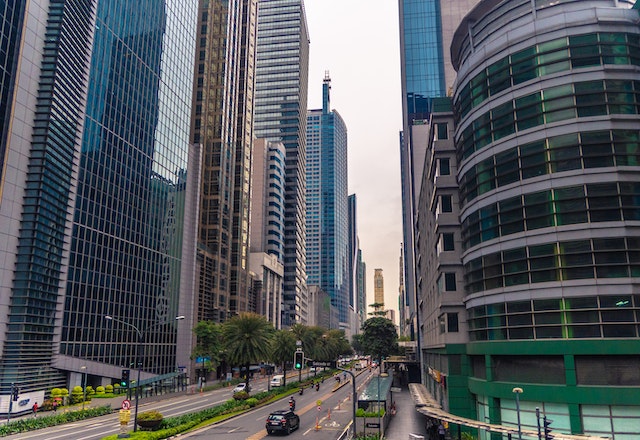
Metro Manila
Metro Manila, also known as the National Capital Region (NCR), is the capital and largest urban area in the Philippines. It’s a bustling metropolis that includes several cities and municipalities, each offering its unique character and lifestyle. While it is known for its urban lifestyle, Metro Manila has a lot to offer retirees. Here’s an overview:
Diverse Lifestyle: Metro Manila offers a diverse and cosmopolitan lifestyle. You can find everything from upscale shopping malls, fine dining restaurants, cultural events, and entertainment venues to local markets and street food stalls.
Healthcare: The region has some of the country’s top healthcare facilities, including internationally accredited hospitals and medical centers. This is a crucial consideration for retirees.
Expatriate Communities: Metro Manila has a sizable expatriate community, which can be reassuring for retirees looking to connect with people from their home countries.
Cultural Attractions: The city is rich in cultural attractions, including historic sites like Intramuros (the old walled city of Manila), art galleries, museums, and theaters.
Shopping and Dining: Metro Manila offers a wide range of shopping options, from high-end malls to local markets. The dining scene is equally diverse, with international cuisines and traditional Filipino dishes readily available.
Transportation: While traffic congestion can be an issue in Metro Manila, the city has an extensive network of taxis, ride-sharing services, buses, and the Metro Rail Transit (MRT) and Light Rail Transit (LRT) systems.
Accommodation: You can find a variety of housing options, from condominiums and apartments to houses in gated communities. The cost of living varies depending on your lifestyle and location within the metro.
Retirement Communities: There are retirement communities and condominium developments specifically designed for retirees. These often come with amenities and services tailored to seniors.
Weather: Metro Manila has a tropical climate with a rainy season from June to October and a dry season from November to May. The weather can be hot and humid at times.
Visa and Legal Considerations: Retirees will need to understand the visa requirements and legal considerations for staying in the Philippines long-term. The Special Resident Retiree’s Visa (SRRV) program is one option that offers benefits to retirees.
It’s worth noting that while Metro Manila offers many conveniences and amenities, it can also be crowded and hectic in certain areas. Some retirees prefer quieter and more relaxed locations in the Philippines, while others enjoy the vibrancy and opportunities of urban living in Metro Manila. The choice ultimately depends on your preferences and priorities for retirement
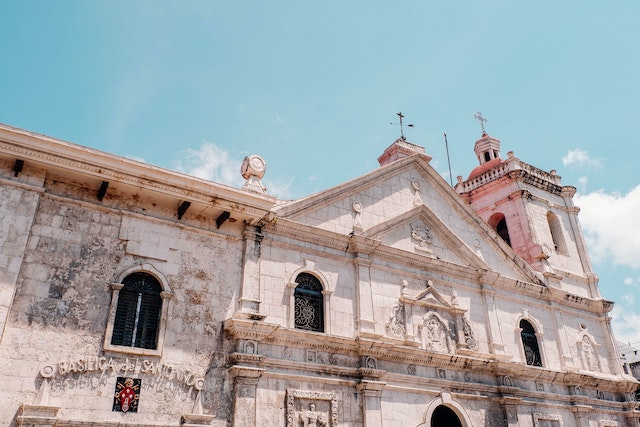
Cebu City
Cebu City is the capital of Cebu province in the Visayas region of the Philippines. It is the second-largest city in the country and a popular destination for retirees, expatriates, and tourists. Here’s an overview of Cebu City as a retirement destination:
Lifestyle and Cost of Living:
Cebu City offers a mix of urban conveniences and a more relaxed lifestyle compared to Metro Manila. The cost of living is generally lower, including housing and daily expenses.
You can find a range of housing options, from apartments and condominiums to houses in gated communities or rural areas.
Healthcare:
Cebu City has well-equipped hospitals and medical facilities, including international-standard hospitals and clinics. Many healthcare professionals are trained abroad and speak English, making medical care accessible to expatriates and retirees.
Cultural Attractions:
The city has a rich history and offers cultural attractions like Fort San Pedro, Basilica Minore del Santo Niño, and Magellan’s Cross.
Cebu also hosts festivals such as Sinulog, which showcases vibrant parades and traditional dance performances.
Beaches and Nature:
Cebu is renowned for its beautiful beaches and natural attractions. Nearby destinations like Mactan Island, Bantayan Island, and Moalboal offer pristine shores, diving opportunities, and water activities.
The province of Cebu also features mountains, waterfalls, and eco-tourism spots for nature enthusiasts.
Shopping and Dining:
Cebu City has modern shopping malls, markets, and local stores where you can find a wide range of products. The dining scene is diverse, with both local and international cuisine options.
Transportation:
Getting around Cebu City is relatively easy with taxis, ride-sharing services, jeepneys, and tricycles. The city also has an international airport, Mactan-Cebu International Airport, with connections to major cities.
Community and Expatriate Presence:
Cebu City has a growing expatriate community, making it easier to connect with people from around the world.
There are social clubs, organizations, and events where retirees can socialize and build a support network.
Visa and Legal Considerations:
Retirees will need to understand the visa requirements and options for staying long-term in the Philippines. The Special Resident Retiree’s Visa (SRRV) program is one option.
Cebu City provides a balanced environment for retirees, offering access to modern amenities, healthcare, and cultural experiences while maintaining a more relaxed pace of life than the bustling capital, Manila. The city’s proximity to beautiful beaches and natural wonders makes it an attractive choice for those who appreciate both urban living and outdoor adventures
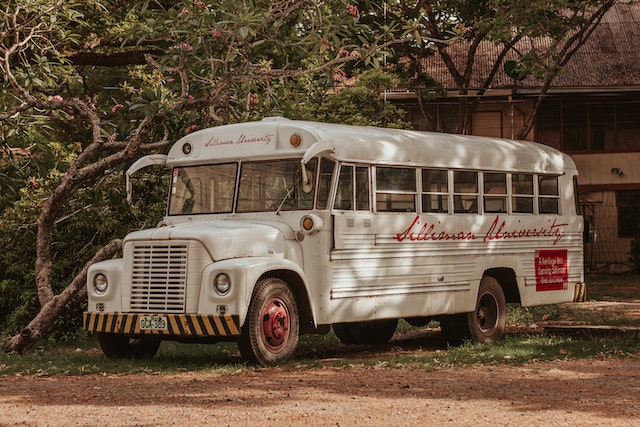
Dumaguete
Dumaguete, often referred to as the “City of Gentle People,” is a charming and laid-back city located in the Negros Oriental province of the Philippines. It’s a popular destination for retirees, expatriates, and tourists who seek a relaxed lifestyle, beautiful natural surroundings, and a welcoming community. Here’s what you need to know about Dumaguete as a retirement destination:
Cost of Living:
Dumaguete offers a relatively low cost of living compared to larger cities like Manila or Cebu. Housing, food, and daily expenses are budget-friendly.
Friendly Atmosphere:
The city is known for the warmth and friendliness of its residents, earning it the nickname “City of Gentle People.” The welcoming local community makes it easy for newcomers to feel at home.
Natural Beauty:
Dumaguete is surrounded by natural beauty, including beaches, mountains, and lush greenery. Nearby attractions like Apo Island, Siquijor Island, and Casaroro Falls offer opportunities for outdoor adventures, snorkeling, diving, and hiking.
Education and Healthcare:
Dumaguete is home to Silliman University, one of the oldest universities in the Philippines. The city also has modern healthcare facilities and hospitals.
Local Cuisine:
Enjoying local cuisine is a highlight in Dumaguete. Be sure to try dishes like “silvanas” (a local cookie), “budbud kabog” (sticky rice with coconut), and fresh seafood at local eateries.
Transportation:
Getting around Dumaguete is easy with tricycles, pedicabs, and multicabs (local public transportation). The city is pedestrian-friendly, making it convenient for daily activities.
Community and Expatriate Presence:
Dumaguete has a growing expatriate community, which provides opportunities to meet and socialize with people from around the world. There are expat clubs and events to facilitate connections.
Retirement Communities:
The city offers retirement communities and housing options specifically designed for retirees. These often come with amenities and services tailored to seniors.
Visa and Legal Considerations:
Retirees will need to understand the visa requirements and options for staying long-term in the Philippines. The Special Resident Retiree’s Visa (SRRV) program is one option.
Dumaguete’s tranquil atmosphere, friendly residents, and beautiful surroundings make it an attractive choice for retirees seeking a relaxed and affordable retirement destination. Whether you’re interested in exploring natural wonders, engaging with a welcoming community, or simply enjoying a peaceful lifestyle, Dumaguete has much to offer
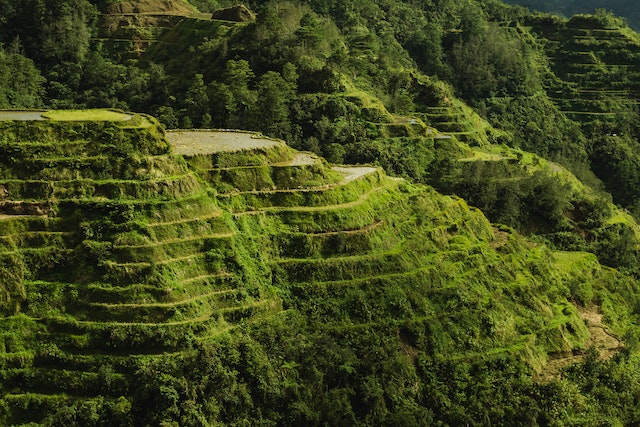
Tagaytay
Tagaytay is a popular retreat and retirement destination located in the province of Cavite, Philippines. It is known for its cool and pleasant climate, stunning views of Taal Volcano and Taal Lake, and a relaxed atmosphere. Here’s what you need to know about Tagaytay as a retirement destination:
Climate and Scenic Views:
Tagaytay’s high elevation (about 2,000 feet above sea level) results in a cooler climate than many other parts of the Philippines. This makes it a refreshing escape from the heat of lower-altitude cities.
The city is famous for its panoramic views of Taal Volcano, which is an active volcano situated in the middle of Taal Lake. The combination of the lake, the volcano, and the lush surroundings creates a picturesque landscape.
Cost of Living:
Tagaytay offers a moderate cost of living compared to larger cities like Manila or Cebu. Housing, food, and daily expenses are reasonably priced.
Housing Options:
You can find various housing options in Tagaytay, including condominiums, apartments, and houses in gated communities. Some properties offer stunning views of Taal Volcano.
Restaurants and Dining:
The city boasts a diverse dining scene with restaurants offering local and international cuisines. Tagaytay is known for its bulalo (beef bone marrow soup) and fresh produce, including fruits and vegetables.
Nature and Recreation:
Tagaytay is surrounded by natural attractions, including parks, gardens, and hiking trails. Picnicking at Picnic Grove, visiting the People’s Park in the Sky, and exploring the Taal Lake and Volcano are popular activities.
The city also has golf courses and spa resorts for relaxation and leisure.
Accessibility:
Tagaytay is easily accessible from Manila, with a travel time of about 1.5 to 2 hours by car. Several bus companies operate routes between Manila and Tagaytay as well.
Community and Lifestyle:
While Tagaytay is a popular tourist destination, it also has a growing expatriate community. This community offers opportunities for socializing and networking.
The city has a relaxed and peaceful lifestyle, making it conducive to retirement and relaxation.
Visa and Legal Considerations:
Retirees will need to understand the visa requirements and options for staying long-term in the Philippines. The Special Resident Retiree’s Visa (SRRV) program is one option.
Tagaytay’s pleasant climate, scenic beauty, and proximity to Manila make it an attractive choice for retirees looking to enjoy a cooler and more tranquil retirement experience. Whether you’re interested in taking in the views, exploring nature, or savoring local cuisine, Tagaytay offers a range of options for retirees to enjoy their retirement years

Bohol
Bohol, particularly Panglao Island, is a picturesque and tranquil destination in the Philippines known for its stunning beaches, vibrant marine life, and relaxed lifestyle. It’s an increasingly popular choice for retirees, expatriates, and tourists seeking a tropical paradise. Here’s what you need to know about Bohol, with a focus on Panglao Island, as a retirement destination:
Natural Beauty:
Panglao Island is renowned for its pristine white sand beaches and crystal-clear waters. Alona Beach is one of the most famous and bustling beach areas, while quieter spots like Dumaluan Beach offer a serene escape.
The island’s coastline is ideal for swimming, snorkeling, scuba diving, and water sports. Bohol Sea is known for its diverse marine life and underwater attractions.
Cost of Living:
Bohol, including Panglao Island, offers a relatively affordable cost of living compared to larger cities in the Philippines. Housing, dining, and daily expenses are budget-friendly.
Accommodation:
You can find various types of accommodation, from beachfront resorts and hotels to vacation rentals and guesthouses. Many properties offer beautiful sea views.
Activities and Recreation:
Beyond water activities, Panglao Island and Bohol offer opportunities for exploring nature, including visits to the Chocolate Hills, tarsier sanctuaries, and inland waterfalls like Mag-Aso Falls.
The island’s lush landscapes are perfect for hiking, biking, and bird-watching.
Community and Lifestyle:
Panglao Island has a growing expatriate community, providing opportunities for socializing and meeting people from around the world.
The lifestyle on Panglao is relaxed and laid-back, making it suitable for retirees seeking a peaceful environment.
Transportation:
Panglao Island is connected to the main island of Bohol via a bridge. Transportation on the island includes tricycles and motorcycles for hire. The main port of Bohol, Tagbilaran City, offers ferry services to Cebu and other neighboring islands.
Visa and Legal Considerations:
Retirees will need to understand the visa requirements and options for staying long-term in the Philippines. The Special Resident Retiree’s Visa (SRRV) program is one option.
Healthcare:
While Bohol may not have the same level of healthcare facilities as major cities like Manila, Tagbilaran City, the capital of Bohol, has hospitals and medical clinics that can address common healthcare needs. For specialized care, nearby Cebu City offers more comprehensive healthcare options.
Bohol, especially Panglao Island, offers retirees a serene and tropical retirement destination where they can enjoy beautiful beaches, explore nature, and experience a more relaxed way of life. Whether you’re interested in water activities, nature excursions, or simply unwinding by the sea, Bohol has plenty to offer retirees seeking a peaceful and picturesque retirement setting
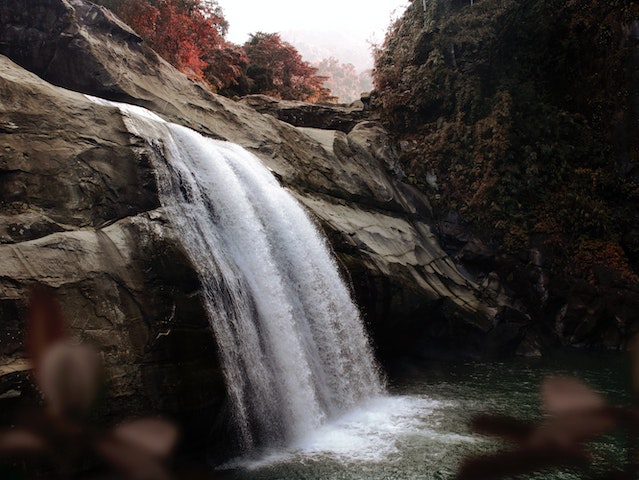
Subic Bay
Subic Bay is a popular coastal area and former U.S. naval base located in the province of Zambales, Philippines. It is known for its beautiful bay, water activities, and proximity to nature reserves. Subic Bay has become an attractive destination for retirees, expatriates, and tourists. Here’s what you need to know about Subic Bay as a retirement destination:
Natural Beauty:
Subic Bay boasts a picturesque bay area with clean beaches and clear waters. Water activities like swimming, snorkeling, and boating are popular among residents and visitors.
Cost of Living:
The cost of living in Subic Bay is generally lower than in larger cities like Manila. Housing, dining, and daily expenses are reasonably priced.
Accommodation:
There are various accommodation options in Subic Bay, including beachfront resorts, hotels, and vacation rentals. Some properties offer beautiful views of the bay.
Activities and Recreation:
The area offers a range of recreational activities, including golf, hiking, and horseback riding. The nearby Subic Bay Freeport Zone has shopping centers, restaurants, and entertainment options.
Subic Bay is known for its diving spots, and it’s a great place to explore marine life and underwater wrecks.
Transportation:
Subic Bay is easily accessible by road, and it’s about a 2-3 hour drive from Manila. Several bus companies operate routes between Manila and Subic.
Within Subic Bay, tricycles, taxis, and jeepneys are common modes of transportation.
Community and Lifestyle:
Subic Bay has a growing expatriate community, which provides opportunities for socializing and networking.
The lifestyle in Subic Bay is generally relaxed, with a focus on outdoor activities and enjoying the bay’s natural beauty.
Visa and Legal Considerations:
Retirees will need to understand the visa requirements and options for staying long-term in the Philippines. The Special Resident Retiree’s Visa (SRRV) program is one option.
Healthcare:
Subic Bay has medical clinics and facilities that can address common healthcare needs. For more specialized care, nearby Olongapo City and Clark Freeport Zone offer healthcare options.
Education:
For retirees with school-aged children or grandchildren, there are international schools available within driving distance.
Subic Bay offers retirees a coastal and nature-oriented retirement experience, with access to water activities, a relaxed lifestyle, and a friendly community. Whether you’re interested in beachfront living, outdoor adventures, or simply enjoying the serene bay views, Subic Bay has much to offer retirees seeking a peaceful and picturesque retirement destination
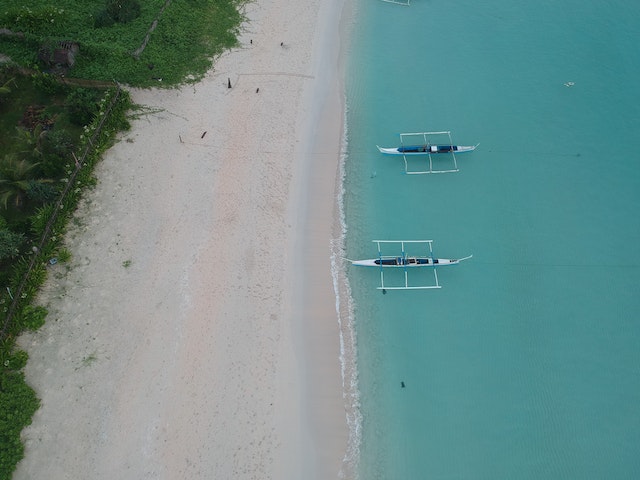
Puerto Princesa
Puerto Princesa is the capital city of the province of Palawan in the Philippines. It’s known for its natural beauty, eco-friendly tourism, and a laid-back atmosphere. Puerto Princesa, often referred to as the “City in a Forest,” is a popular destination for retirees, expatriates, and nature enthusiasts. Here’s what you need to know about Puerto Princesa as a retirement destination:
Natural Wonders:
Puerto Princesa is famous for the Puerto Princesa Underground River, a UNESCO World Heritage site and one of the New 7 Wonders of Nature. It’s a popular attraction for visitors.
The city and its surroundings offer a wealth of natural beauty, including pristine beaches, clear waters, limestone karst formations, and lush rainforests.
Cost of Living:
The cost of living in Puerto Princesa is generally lower than in larger cities like Manila. Housing, dining, and daily expenses are relatively affordable.
Accommodation:
You can find various accommodation options in Puerto Princesa, from beachfront resorts and boutique hotels to budget-friendly guesthouses. Many properties offer access to the beach or scenic views.
Activities and Recreation:
Outdoor activities abound, including island hopping, snorkeling, scuba diving, and exploring underground rivers and caves.
The city has parks and gardens, such as the Puerto Princesa City Baywalk Park and the Crocodile Farm and Nature Park.
Transportation:
Puerto Princesa has an international airport, making it accessible from other major cities in the Philippines. Within the city, tricycles and multicabs are common modes of transportation.
Community and Lifestyle:
While Puerto Princesa may not have a large expatriate community compared to some other destinations, it has a welcoming local community. Residents often participate in eco-friendly initiatives.
The lifestyle in Puerto Princesa is generally relaxed, with a focus on enjoying nature and outdoor activities.
Visa and Legal Considerations:
Retirees will need to understand the visa requirements and options for staying long-term in the Philippines. The Special Resident Retiree’s Visa (SRRV) program is one option.
Healthcare:
Puerto Princesa has medical clinics and facilities that can address common healthcare needs. For more specialized care, you can consider nearby cities like Manila or Cebu.
